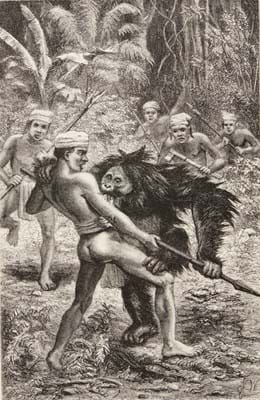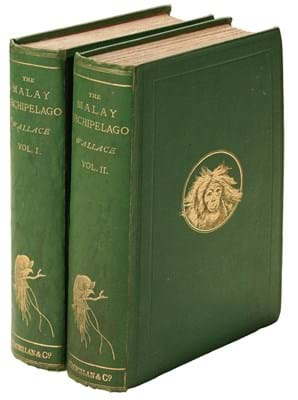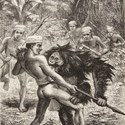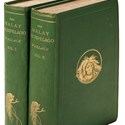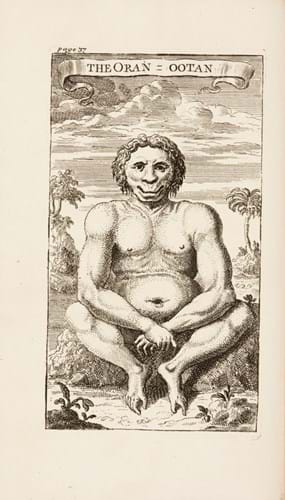
The curious engraved illustration of an orang-utan seen above may well have been based only on a verbal description and leans heavily towards the literal meaning of the name – man, or person of the forest.
One of the earlier illustrations of the animal, it comes from a 1718 first edition of A Voyage to... the island of Borneo, a work by the captain of an East Indiaman, Daniel Beeckman, that sold for £3800 at the auction on September 26.
Josef Wolf engraving
The large Asian red ape is one of man's closest relatives, sharing nearly 97% of the same DNA. It is essentially gentle in nature, but the much hairier and more zoologically accurate orang-utan seen in the illustration reproduced below seems very cross indeed.
A wood engraving after one of the more distinguished natural history artists of the 19th century, Josef Wolf, it is captioned 'Orang Utan attacked by Dyaks'. Nevertheless, it is one of these famed, headhunting inhabitants of Borneo who seems to be under attack by the orang-utan.
The frontispiece to Volume I, it is one of the plates, text illustrations and maps that illustrate Alfred Russel Wallace's The Malay Archipelago, the Land of the Orang-utan and the Bird of Paradise, published in two volumes by Macmillan in 1869.
The Wallace book, also sold for £3800 at Sotheby’s, was not a great copy. The pictorial gilt green cloth binding showed some wear and soiling and a number of the leaves and plates were becoming detached, but the editors of the Dictionary of Scientific Biography describe this work as "one of the finest scientific travel books ever written".
Over eight years spent in the Malay archipelago and the East Indies, Wallace undertook innumerable expeditions, collected tens of thousands of natural history specimens and identified hundreds of new species of birds and insects. Birds of Paradise and the orang-utan, however, exerted a particular fascination.
It was during these travels that, independently of Darwin – who had yet to publish his own great work – that Wallace began to form his own theories of evolution and natural selection, and in so doing provided the impetus that Darwin needed to get On the Origin of Species... completed and into print.


